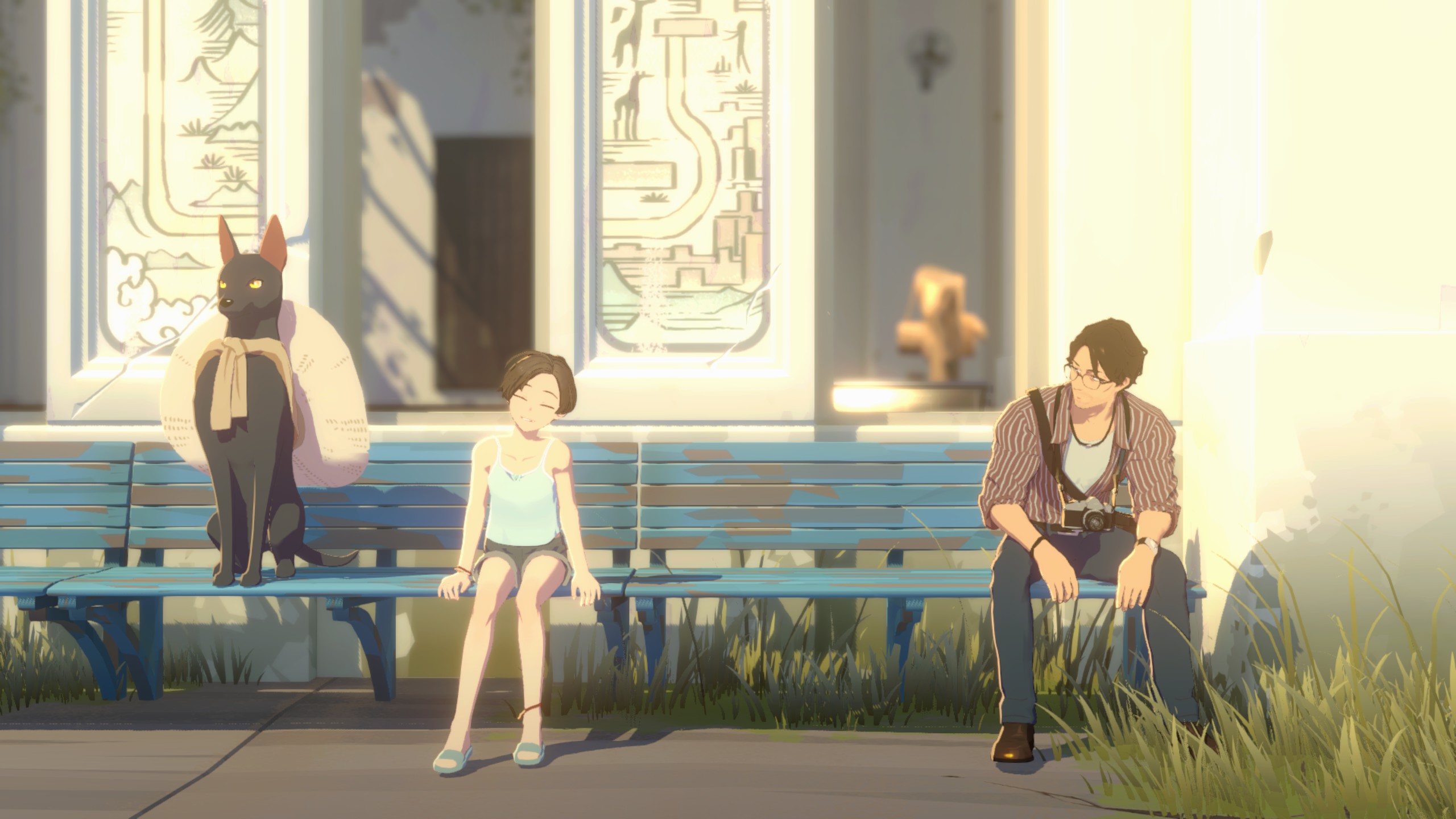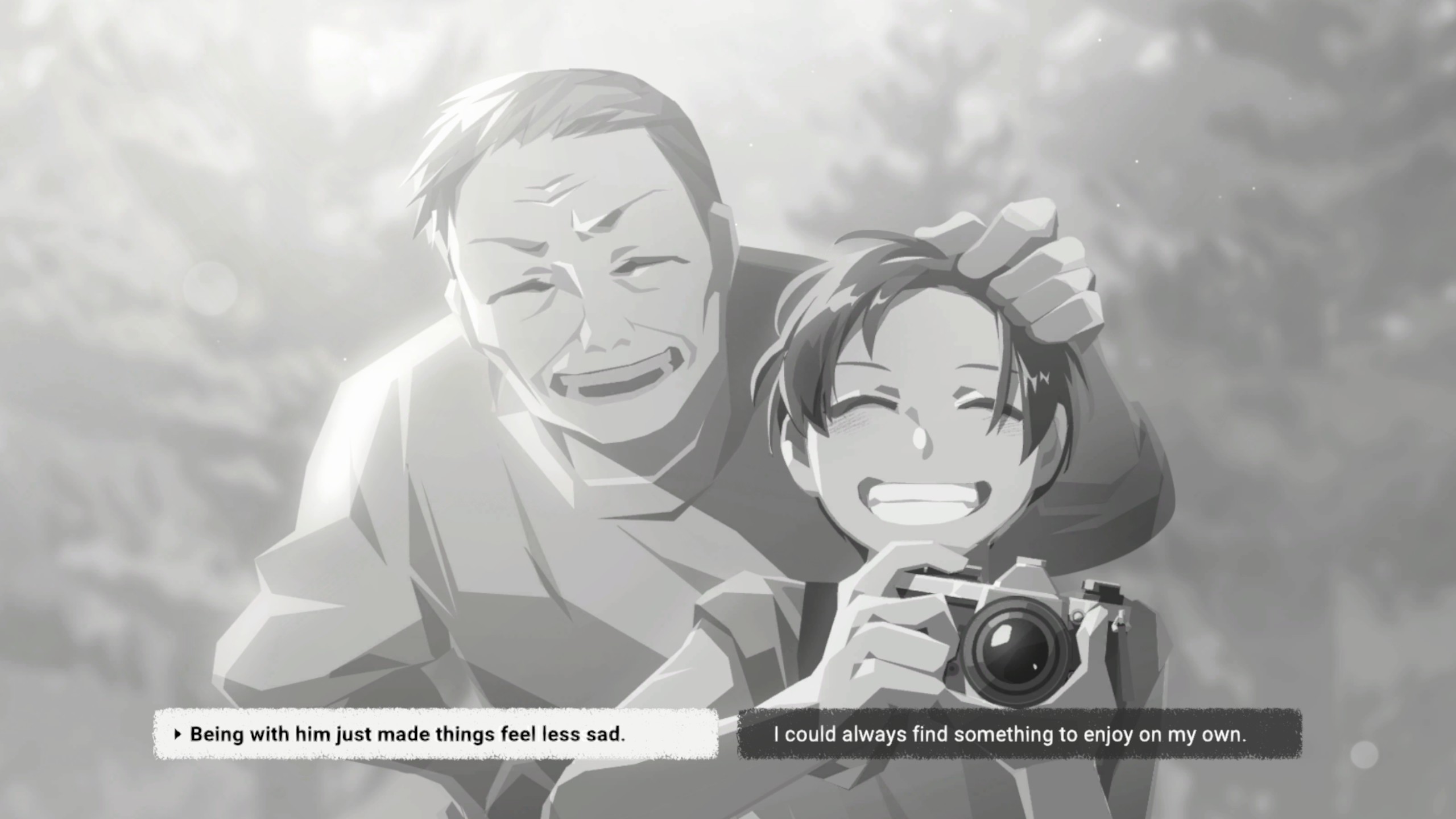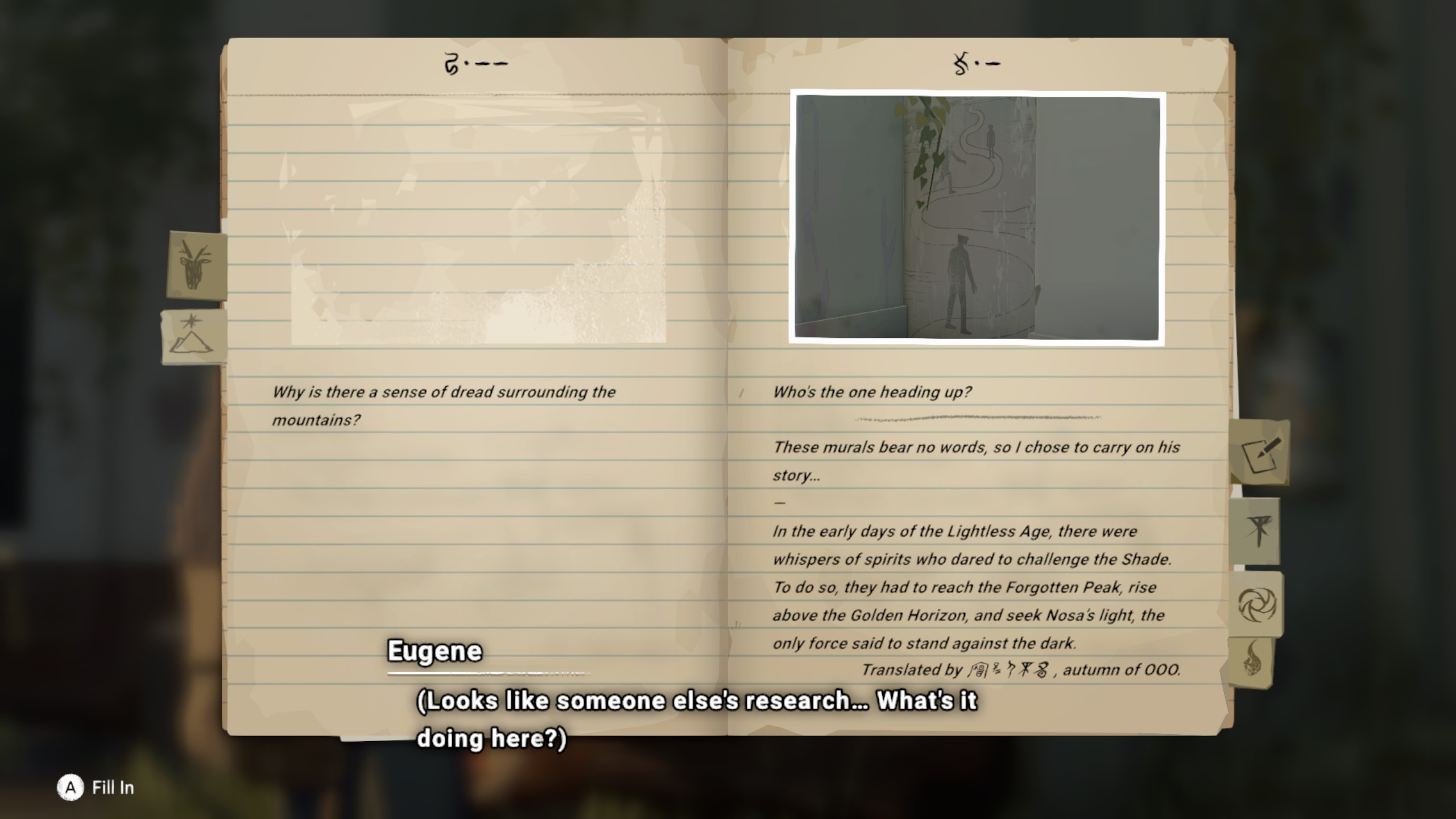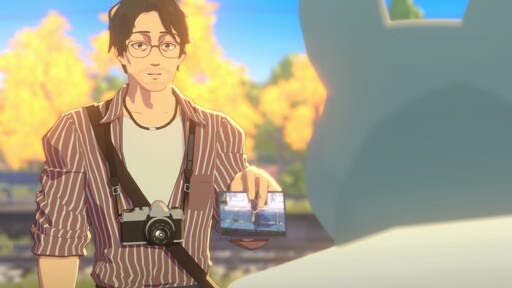Everyone wants to be Ghibli and almost no one can pull it off. Hell, even Studio Ghibli sometimes struggles. So when I set eyes on Opus: Prism Peak—with its lush anime palette, verdant natural settings, and chatty animals—I confess I sucked air through my teeth. Sigono’s previous Opus games are much-beloved, but none of them invite comparison to such famously incomparable art quite this hard.
But dare I say it, the devs might have made it work? Caveat here: the demo I played was blink-and-you’ll-miss-it short, clocking it at a mere 30 minutes of runtime and consisting of little more than a very small level. Still, it offered enough to interest me in the full thing, where it could very easily have fumbled the bag.

(Image credit: Shueisha Games)
Photo finish
Like so many videogame power fantasies, Opus: Prism Peak places you in the role of a middle-aged photographer and failed businessman. Eugene’s a rather forlorn 40-year-old—once a bright-eyed kid running about the woods with his grandpa, snapping pictures, life’s put him through the wringer a few times since then. Ventures have failed, friends have departed, and even back in that halcyon childhood things weren’t perfect: mum and dad were at each other’s throats in the background.
Which is presumably why, as though assigned by god’s bureaucracy, fate has lumbered him with the care of a very chirpy young girl called Ren. Ren is full of vim and vigour and rosy guileless optimism, and assuredly will have a great deal to teach old Eugene about life and the living of it as they embark on their quest to escape the fantasy world they’re lost in.
Which means puzzles, which means pointing your camera at anything that even looks like it might turn into a usable photo. In the demo, there’s nary a problem you can’t solve by turning it into a Kodak moment. A mural on the wall? Add it to your album. Train tracks disappearing into the horizon? Add it to your album. Ghost dog? Album. Vending machine? Album.

(Image credit: Shueisha Games)
You take those photos and put them to use. Opus’ fantasy world—the Dusklands—features little firebowls dotted about the place. On the one hand, you can burn seeds at them to unlock handy-dandy consumables, like lens-cleaning kits (I assume they’re handy-dandy, anyway; my lens never actually got dirty).
On the other, they will also give you cryptic statements that you can solve with particular photos. A request for a reminder of better times might be solved by a shot of some flowers, or a nostalgic graffito. A request for a vending machine can be solved by, uh, a shot of a vending machine. They’re not all brain-twisters.
Please the fireshrine and you can unlock new bits and bobs for your camera, but you’re not just burning photographs all day. Escaping the Dusklands means ingratiating yourself with the world’s collection of diaphanous and magical animals, who seem prone to phasing out of existence if you don’t ground them with a well-timed photo.
You’ve also got a notebook filled with slots for photos to slide into—each one handily pre-described by a cryptic line or two. Put the right photo in the right bit and you unlock a little bit of lore. Or more cryptic lines, anyway. Hey, it worked for Dark Souls.

(Image credit: Shueisha Games)
It’s all quite easygoing and charming in a slow, pleasant way, and I’d be quite happy to pour in far more than the 30 minutes I’ve already spent ambling about the Dusklands taking snaps. Perhaps I’ll do just that when Opus: Prism Peak hits Steam sometime later this year.
From PCGamer latest via this RSS feed


